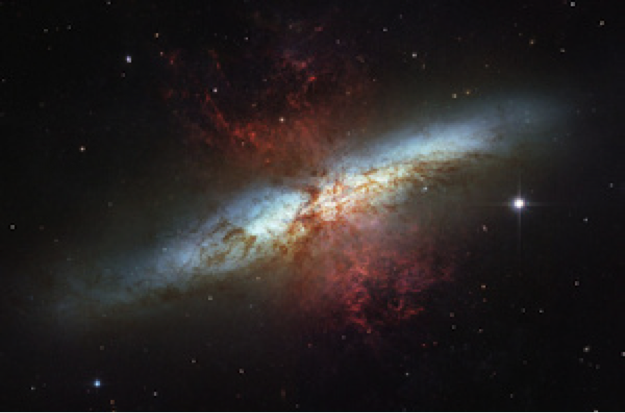A study discards the possibility that the progenitor of the type Ia SN 2014J might have stemmed from the explosions of a white dwarf nourished by a normal star. Were these conclusions to become generalized, the use of type Ia supernovae "cosmological standard candles" might need to be revised.
Type Ia supernovae happen when a white dwarf, the "corpse" of a star similar to the Sun, absorbs material from a twin star until it reaches a critical mass--1.4 times that of the Sun-and explodes. Because of their origin, all these explosions share a very similar luminosity. This uniformity made type Ia supernovae ideal objects to measure distances in the universe, but the study of supernova 2014J suggests that there could be different paths leading to a type Ia supernova explosion.
"These different paths may lead to intrinsically large variations in brightness. Until now astronomers have empirically corrected this spread in brightness, which has allowed us to discover that the universe was expanding at an accelerating rate. However, to do precision cosmology, we probably need to identify the origin of each individual type Ia supernova explosion. We have yet not reached that level of understanding", says Miguel Ángel Pérez Torres, researcher at the Institute of Astrophysics of Andalusia (IAA-CSIC) in charge of the study, whose team used the world's most sensitive VLBI array, the European VLBI Network of radio telescopes, to obtain their results.

Galaxy M82 in which the supernova exploded
Credit: NASA, ESA, & Hubble Heritage
More information:
Full article: M. A. Perez-Torres, P. Lundqvist, R. J. Beswick, C. I. Bjornsson, T. W. B. Muxlow, Z. Paragi, S. Ryder, A. Alberdi, C. Fransson, J. M. Marcaide, I. Marti-Vidal, E. Ros, M. K. Argo, J. C. Guirado. Constraints on the progenitor system and the environs of SN 2014J from deep radio observations. The Astrophysical Journal. ApJ, vol. 792, pág. 38


